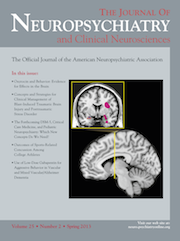Methamphetamine-Associated QTc Prolongation in a Dose-Dependent and Reversible Manner
To the Editor: Only two studies have examined the potential of methamphetamine to lengthen the electrocardiographic QT interval.1,2 Little is known about whether this adverse effect is reversible or dose-dependent, given a single time-point evaluation in previous studies. We report here a case of a methamphetamine-dependent patient, in whom methamphetamine caused a dose-dependent, reversible increase in corrected QT interval.
Case Report
“Mr. A,” a 41-year-old man, had regularly taken illicit methamphetamine, from 1 g to 5 g per week, by intranasal inhalation over the past 5 years. Because of irritability, suspiciousness, and agitation, he was brought to our emergency department. The patient’s family reported that neither he nor the family had a medical history of syncope, palpitation, chest pain, or cardiovascular disease, and he was not taking any prescription or over-the-counter medications. Physical examinations and laboratory tests, including serum electrolytes, were unremarkable, except for urine toxicology testing, which showed a methamphetamine level exceeding 2,000 ng/ml. A 12-lead electrocardiogram (ECG) demonstrated normal sinus rhythm (NSR), with a rate of 70 beat/min and a QTc of 487 msec, according to Fridericia’s formula. Nevertheless, an ECG obtained 3 months before, when the result of urine drug screening was negative, revealed NSR with a rate of 70 beat/min and a QTc of 371 msec. Four days after this admission, the patient’s QTc increased to 410 msec, and his urine methamphetamine level was 722 ng/ml. No significant findings were reported in his echocardiography and 24-hour Holter monitoring. Finally, he was discharged in stable condition with a normal QTc interval. Five months later, he was brought to our hospital because of similar symptoms. His ECG revealed NSR with a rate of 60 beat/min and a QTc of 476 msec according to Fridericia’s formula, and urine methamphetamine was 944 ng/ml. At the time of discharge, his QTc interval decreased to 405 msec, and urine methamphetamine level was 0.
Discussion
This case report demonstrated that methamphetamine may prolong QTc interval in a reversible, dose-dependent manner, given a clear temporal correlation between changes in urine levels of methamphetamine and changes in QTc interval. The rating by Naranjo Adverse Drug Reaction Probability Scale3 revealed a score of 7, indicating methamphetamine to be a highly probable cause of this adverse effect.
There are at least 17 different kinds of ion channels and ion pumps in the cell membrane of cardiomyocytes that may affect the duration and size of the action potential, leading to prolongation of ventricular depolarization and repolarization.4 Delayed rectifier potassium channel may be the most often involved in the context of drug-induced QTc interval prolongation. Evidence suggests that methamphetamine inhibits transient outward potassium current, inward rectifying potassium current, and L-type calcium current.5 Nevertheless, we believe that the exact electrophysiological mechanisms might be more complex.
The major limitation of the current case study is that, given the paucity of longitudinal cohort studies, delayed, irreversible changes in QTc interval due to cumulative damage from chronic methamphetamine use could not be excluded.
In conclusion, a longitudinal study is needed to establish the true relationship between methamphetamine and QTc interval.
1 : Methamphetamine and cardiovascular pathology: a review of the evidence. Addiction 2007; 102:1204–1211Crossref, Medline, Google Scholar
2 : Health conditions in methamphetamine-dependent adults 3 years after treatment. J Addict Med 2009; 3:155–163Crossref, Medline, Google Scholar
3 : A method for estimating the probability of adverse drug reactions. Clin Pharmacol Ther 1981; 30:239–245Crossref, Medline, Google Scholar
4 : The importance of the QT interval: a review of the literature. Acta Psychiatr Scand 2003; 107:96–101Crossref, Medline, Google Scholar
5 : Effect of methamphetamine on potassium and L-type calcium currents in rat ventricular myocytes. Toxicol Mech Methods 2010; 20:458–465Crossref, Medline, Google Scholar



